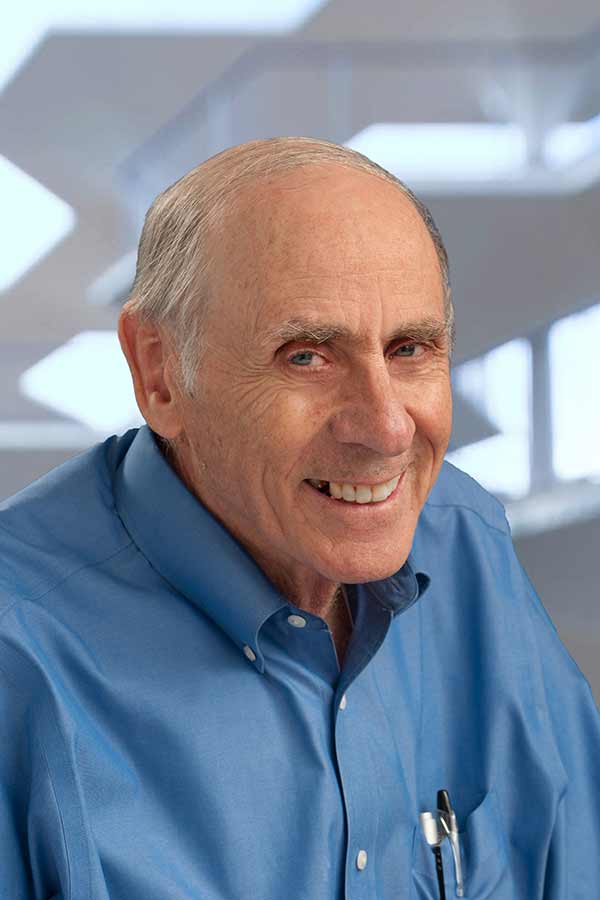
By:
- Kim McDonald
Published Date
By:
- Kim McDonald
Share This:
Center Explores Ways to Treat Human Disorders Using Biological Clock Genes

Stuart Brody
More than a decade ago, Stuart Brody dreamed about starting a new kind of research center at UC San Diego.
It would bring biologists like himself working to understand the circadian rhythms of various kinds of organisms—from bacteria and plants to fruit flies and roundworms—together with researchers at the medical school investigating human sleep disorders.
“I had connections to the medical school because I had taught over there for many years,” said Brody, the founding director of UC San Diego’s Center for Circadian Biology. “So when we started this, I said, Okay, let’s pull everyone together. We’ll learn about sleep from the sleep scientists and they’ll learn about circadian biology from us. And it worked.”
Today, the Center for Circadian Biology, which was launched in 2010 as a way to stimulate cross-campus collaboration in the field, has become a magnet not only for researchers across campus but from around the University of California system and the world.
“It’s taken off like crazy,” said Brody, an emeritus professor of biology who studies the circadian biology of fungi. “We have so many people in it now. It’s become a center for the entire UC system and it has stimulated collaborations among faculty members between the UC campuses.”
Through regular symposia, workshops and formal collaborations, researchers probing how fungi, plants, bacteria and fruit flies coordinate the essential aspects of physiology and behavior according to daily and seasonal cycles are working together on unraveling the basic genetic and biochemical machinery that control the timing of our human sleep-wake cycles, metabolism and immune function, as well as our cardiovascular, endocrine and reproductive health.
Because biological clock genes have been “conserved,” or retained, in our DNA during millions of years of evolution, understanding how organisms such as cyanobacteria or fruit flies regulate their internal biological clocks has provided circadian biologists with a greater understanding of the precise genetic and biochemical mechanisms that control our own sleep-wake cycles, metabolism and reproductive cycles.
The result of this novel approach to studying human disorders, scientists say, will not only lead to new ways of treating disturbances in sleep, jet lag and winter depression, but diseases such as cancer, obesity and cardiovascular and reproductive problems that result when the internal machinery of our biological clocks go awry.
It’s a hot field of research that last month gained greater recognition when three American scientists who unraveled the genes controlling circadian rhythms in fruit flies three decades ago were awarded the 2017 Nobel Prize in Physiology or Medicine. One of the three Nobel Prize-winners, Michael Young of Rockefeller University, is a member of the advisory board of the Center for Circadian Biology.
“Inside of our field, we all knew that the Nobel Prize was coming. It was just a question of when,” said David Welsh, the interim director of the center and a professor of psychiatry at UC San Diego School of Medicine who studies human mood disorders resulting from problems in circadian biology. “We already knew how important this field is, but the major impact of the Nobel Prize has been on people outside the field, giving it more credibility.”
At a mid-November symposium held by the center on campus, researchers from throughout the University of California system showed just how powerful a tool circadian biology can be in addressing some of the major health problems facing our society, such as obesity, Alzheimer’s disease and the cognitive declines associated with aging.

Ruth Benca. Photo by Erik Jepsen/UC San Diego
Ruth Benca, chair of UC Irvine’s Department of Psychiatry, reported that she had recently discovered that the changes in our brains that result in mid-life from sleep disturbances, such as obstructive sleep apnea, or pauses in breathing during sleep, could be powerful early-warning indicators of cognitive decline, dementia and Alzheimer’s disease later in life.
“The pathology of Alzheimer’s disease starts decades before signs of dementia are apparent, so we’re constantly looking for new ways of detecting these early signs,” she said.
Biomedical researchers have found that people with dementia and Alzheimer’s disease tend to have accumulations of beta-amyloid proteins in certain regions of their brain. Because these individuals also frequently complain of disturbances in their patterns of sleep, Benca wondered if the presence of sleep disorders could be an early warning indicator for cognitive decline later in life.
By studying high-resolution PET scans of the brains of a group of patients in Wisconsin from 50 to 73 years of age, some of whom reported mild-to-severe sleep disturbances, she and her colleagues discovered that in almost every instance, the more people reported moderate to severe problems with their sleep the more amyloid deposition was present in their brains.
Benca said sleep apnea, which results in repeated awakening during the night, has become more prevalent among U.S. adults in recent decades—affecting one in eight men and one in 18 women—due to the aging of our population and increases in the rates of obesity. Individuals with sleep apnea are at increased risk of cardiovascular disease, hypertension, cancer, cognitive defects and dementia, making it a major public health problem.
Biomedical researchers have discovered that rates of sleep apnea are higher in individuals with Alzheimer’s disease and that treatments that reduce sleep apnea slow cognitive declines. So Benca said she has been studying the brains of those with sleep apnea and other sleep disturbances to determine if patterns in their brain scans could be used as early warning indicators of cognitive decline, so physicians can treat these individuals in mid-life to prevent Alzheimer’s disease.
“Sleep may be a modifiable risk factor for Alzheimer’s disease intervention,” she said. “If we can decrease this, it will have a huge impact on our treatment costs and healthy aging.”
Gabriele Sulli, a postdoctoral fellow at the Salk Institute, meanwhile, reported on new results from his laboratory using mice genetically engineered with tumor cells from cancer patients that suggest that a novel cancer therapy could be developed using pharmacological agents that target the biological clock machinery. That’s because tumorigenesis, the process of turning normal cells into cancer cells, disrupts normal circadian rhythms, he said. In addition, the machinery controlling the biological clock controls several biochemical pathways that are altered during tumorigenesis.
Other scientists presented new results from their laboratories from mice, rats and fruit flies on the regulation of biological clock genes that control depression, fertility and the metabolic processes that lead to obesity.
“I think there’s a wider appreciation among people outside the field that this is an important area of research,” said Welsh, the interim director of the Center for Circadian Biology. “There have been more and more studies showing just how pervasive the influence is on gene expression.”
But Welsh cautioned that despite recent progress in the field, circadian biology is still at the basic research stage and many years away from making a substantial impact on clinical treatments for humans.
“I don’t think there’s yet a home run showing that the biological clock has made a major impact on some clinical area,” he said. “Obesity and metabolism are still probably the number one area of promise and cancer would be number two. Mental health, especially the treatment of mood disorders, is number three, but none of us are far enough along that clinicians are actually using these principles very much yet.”
Share This:
You May Also Like
Stay in the Know
Keep up with all the latest from UC San Diego. Subscribe to the newsletter today.


